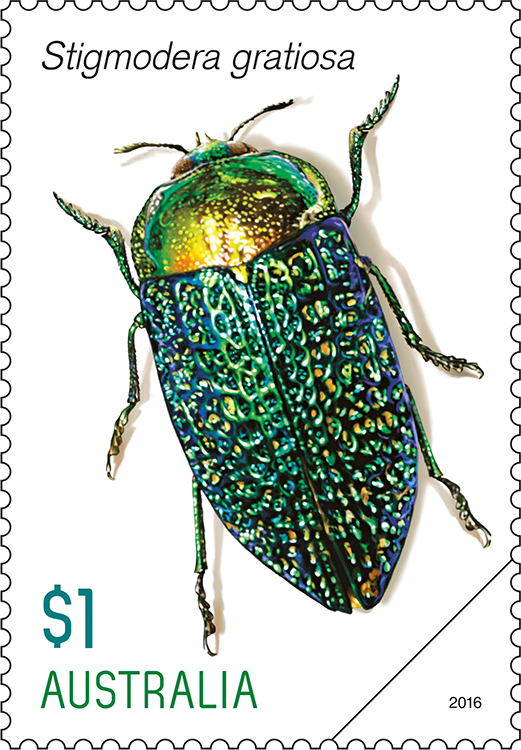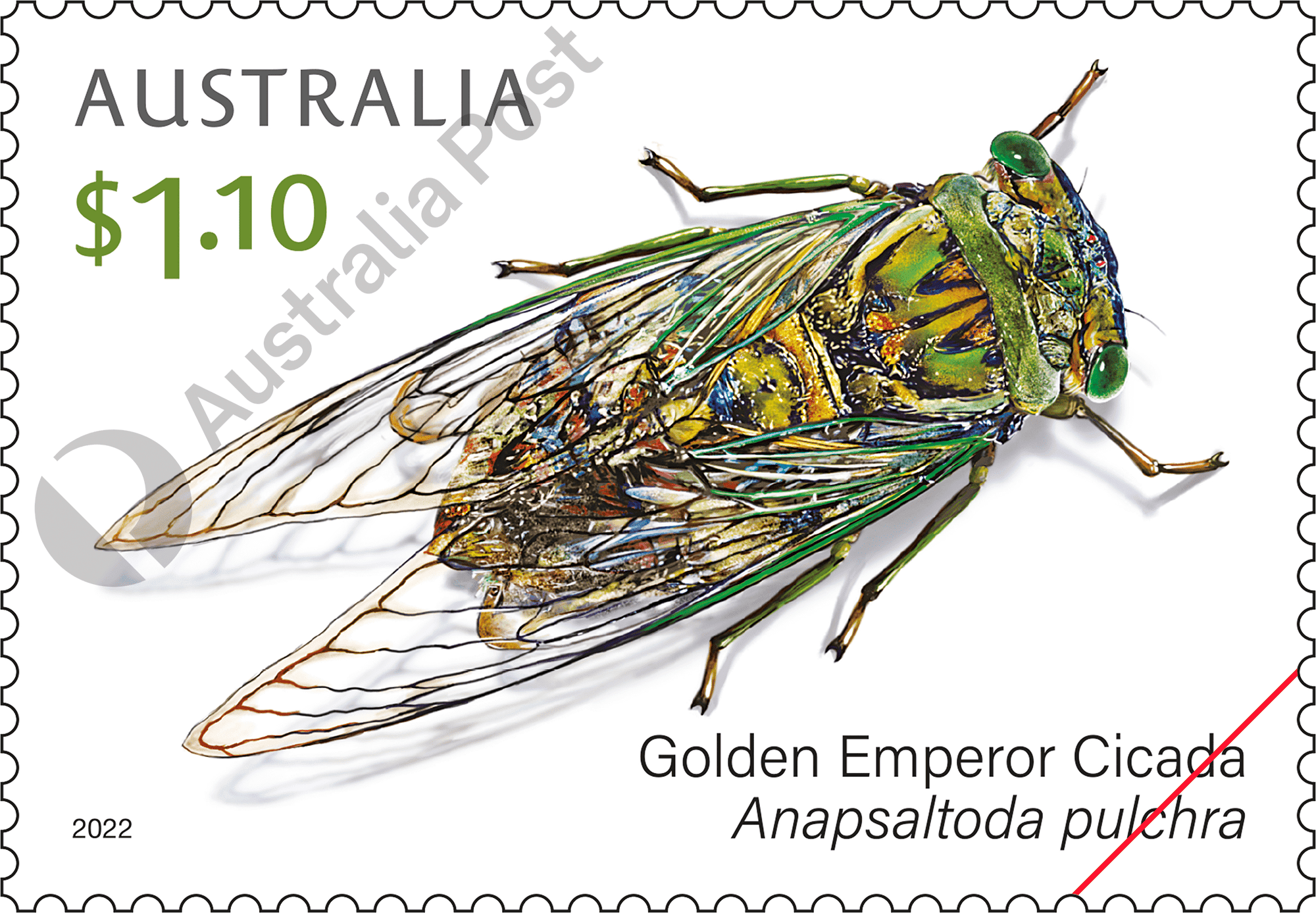
Set of Peacock Spiders Gummed Stamps
This set of stamps contains all three stamps from the Peacock Spiders stamp issue.
The genus Maratus, commonly known as peacock spiders, currently comprises around 96 species, with 20 known species still to be named. This group is endemic to Australia, with the single exception M. griseus, a synanthrope apparently introduced to New Zealand.
Measuring around just 2–5 millimetres in length, these colourful little jumping spiders are named for the peacock-like display adult males use to seduce potential mates, incorporating an impressive array of dance moves. Adult males come in a dazzling array of colours and patterns, specific to each species. Only under the microscope or macro lens does the spectacular colouring and performance of these little spiders become apparent. Unlike adult males, immatures and females are muted brown and/or grey, which serves to camouflage them well.
Species of Maratus are known to live in tropical areas, but most occur in the southern half of Australia, in the temperate and subtropical south-west and south-east. Some prefer coastal areas, even beaches, while others prefer mountain tops, swamps or even desert-like environments. Individuals live for about a year, emerging from an egg during the summer.
Until 2011, the genus was comprised of only eight little-known species placed in different genera. In recent years, many new species have been named and described. Sydney-based arachnologist Jürgen Otto and his US colleague David Hill have described a great number of species since Jürgen first happened upon M. volans in Sydney in 2005 and became intrigued by the tiny spiders. Little was known of their elaborate courtship behaviour until Jürgen observed, documented and filmed their display in 2008, which became a social media hit. Jürgen Otto’s photographs are featured on the stamps.
| Issue date | 9 May 2023 |
| Issue withdrawal date | 1 December 2023 |
| Denomination | $1.20 x 3 |
| Stamp design | Simone Sakinofsky, Australia Post Design Studio |
| product design | Simone Sakinofsky, Australia Post Design Studio |
| Paper: gummed | Tullis Russell 104gsm Red Phosphor/Blue PVA Stamp Paper |
| Paper: self-adhesive | Tullis Russell Red Phos PSA (P55) 100gsm Release S/A |
| Printer | EGO |
| Printing process | Offset lithography |
| Stamp size (mm) | 26 x 37.5 |
| Minisheet size (mm) | 135 x 80 |
| Perforations | 14.6 x 13.86 |
| Sheet layout | Module of 50 |
| FDI postmark | Brighton VIC 3186 |
| FDI withdrawal date | 7 June 2023 |

Also known as the Coastal Peacock Spider, M. speciosus is one of the first of the peacock spiders to have been described, in 1874. As its common name suggests, it inhabits plants among sand-dune areas in the south-west coast of Western Australia. The male raises his red-striped, iridescent cobalt-blue abdomen his during courtship dance, but it is the bright orange-yellow fringing of the fan, extended as he lifts his abdomen, that is particular to this species, as well as his asymmetrical semaphore signalling – his long third legs moving independently during this performance.

Described in 2013 from a spider found in a garden in Canberra and a second one in Grafton, M. purcellae is a tiny spider at just 2.5 to 3 millimetres in length. The individual found in Canberra is known as the “type specimen” and is shown on the stamp. The adult male spider is uniquely coloured, with his head and narrow abdomen deep yellow-gold and black, and three sapphire-coloured spots occurring on his abdomen. He lacks expandable flaps for the fan and is one of the few peacock spiders that doesn’t use its legs for signalling during courtship; these are coloured uniformly grey-brown rather than bearing any flashy markings that may aid in gaining a mate’s attention.

Described in 2015, this species was named from individuals discovered near Tamworth, New South Wales. It takes its name from the pattern evident on the male’s extended abdomen. The red markings on metallic mauve and bronze outline nothing so much as an elephant’s head, when viewed front on. His fan is large and appears more so due to the long hair-like setae that fringe it during courtship. Having none of the male’s colouring, the female has pale brown underparts and a black back.

This set of stamps contains all three stamps from the Peacock Spiders stamp issue.

The Peacock Spiders stamp pack contains all three stamps and minisheet from the stamp issue presented in a high-quality folder.

The Peacock Spiders minisheet consists of the three stamps from the issue incorporated into a miniature stamp sheet.

This maxicard set contains the three maxicards from the Peacock Spiders stamp issue.
This content was produced at the time of the stamp issue release date and will not be updated.

Issue date: 05 September 2016

Issue date: 13 May 2019

Issue date: 04 October 2021

Issue date: 01 August 2022